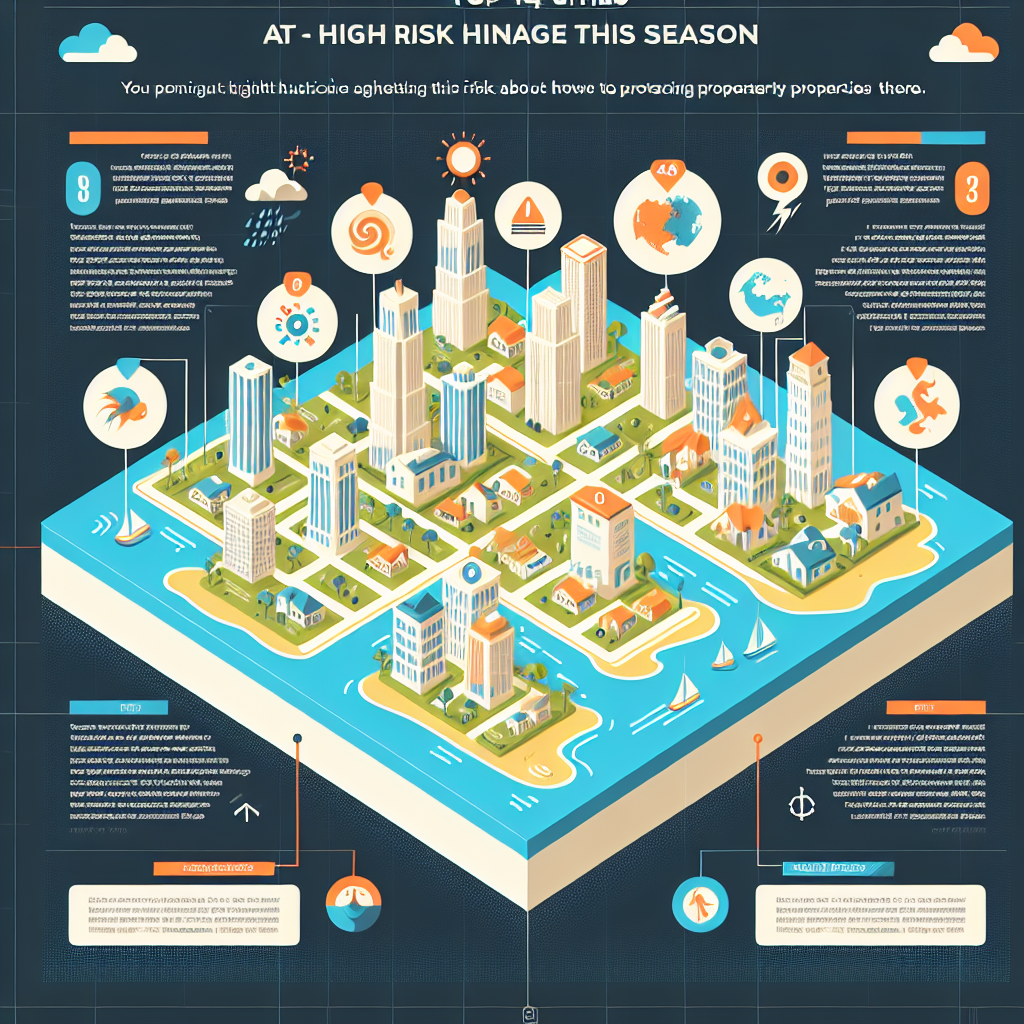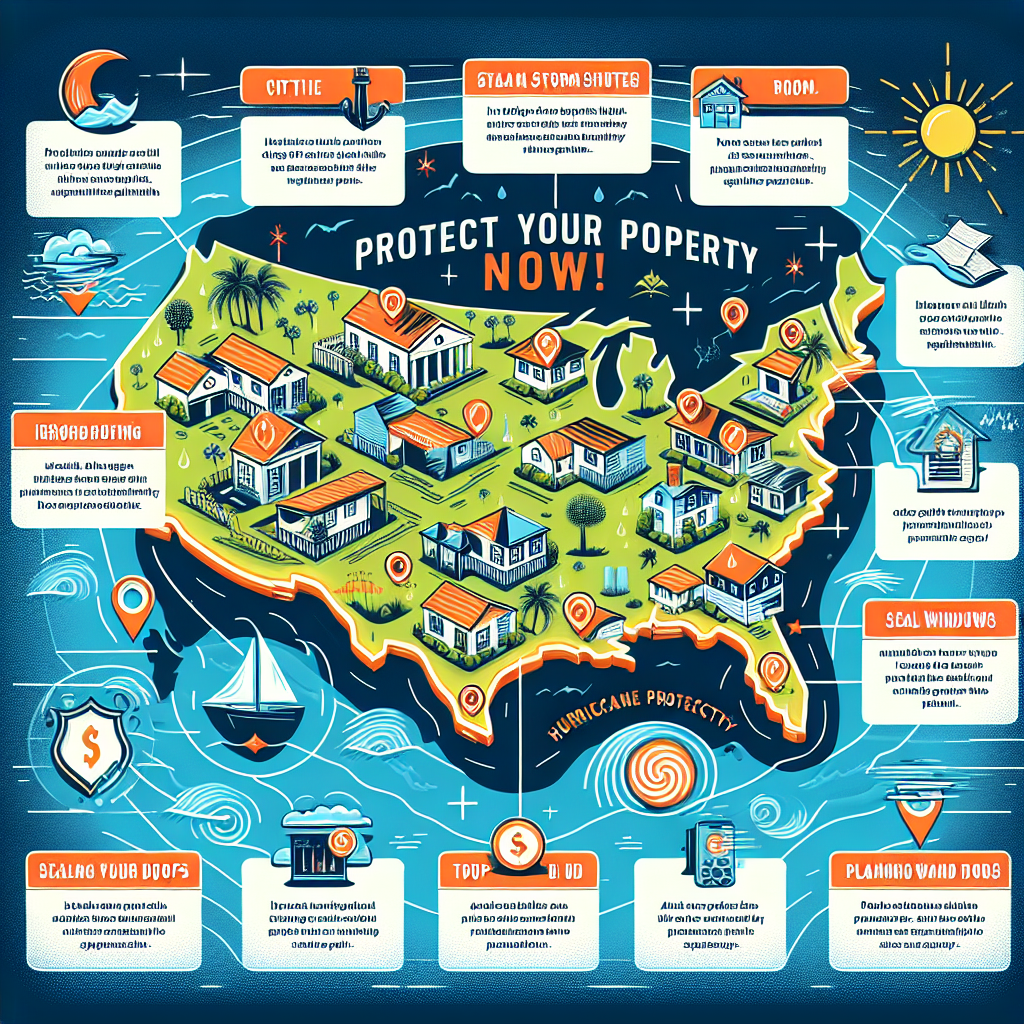-
Table of Contents
- Top 14 Cities at Greatest Risk for Hurricane Damage This Season—Protect Your Property Now
- 1. Miami, Florida
- 2. New Orleans, Louisiana
- 3. Houston, Texas
- 4. Tampa, Florida
- 5. Charleston, South Carolina
- 6. Cape Hatteras, North Carolina
- 7. Key West, Florida
- 8. Galveston, Texas
- 9. Savannah, Georgia
- 10. Virginia Beach, Virginia
- 11. Jacksonville, Florida
- 12. Wilmington, North Carolina
- 13. Mobile, Alabama
- 14. Myrtle Beach, South Carolina
- Conclusion
Top 14 Cities at Greatest Risk for Hurricane Damage This Season—Protect Your Property Now

As hurricane season approaches, it’s crucial to be aware of the cities most at risk for hurricane damage. Understanding these risks can help residents take necessary precautions to protect their property and ensure their safety. This article delves into the top 14 cities at greatest risk for hurricane damage this season, providing valuable insights, statistics, and practical advice for property protection.
1. Miami, Florida
Miami is often the first city that comes to mind when discussing hurricane risks. Located in the southeastern part of Florida, Miami is highly susceptible to hurricanes due to its coastal location and warm waters.
- Historical Data: Miami has experienced numerous hurricanes, including Hurricane Andrew in 1992, which caused over $27 billion in damage.
- Current Risk: The National Oceanic and Atmospheric Administration (NOAA) predicts a high likelihood of hurricanes impacting Miami this season.
- Protection Tips: Residents should reinforce windows and doors, secure outdoor items, and have an evacuation plan in place.
2. New Orleans, Louisiana
New Orleans is another city with a high risk of hurricane damage. Its location below sea level and proximity to the Gulf of Mexico make it particularly vulnerable.
- Historical Data: Hurricane Katrina in 2005 devastated New Orleans, causing over $125 billion in damage and significant loss of life.
- Current Risk: The city’s levee system has been improved, but the risk remains high due to potential storm surges and heavy rainfall.
- Protection Tips: Strengthen levees and flood barriers, elevate homes, and have a comprehensive emergency plan.
3. Houston, Texas
Houston’s location near the Gulf of Mexico makes it a prime target for hurricanes. The city’s flat terrain and extensive bayou system exacerbate flooding risks.
- Historical Data: Hurricane Harvey in 2017 caused catastrophic flooding in Houston, resulting in over $125 billion in damage.
- Current Risk: NOAA forecasts indicate a high probability of hurricanes affecting Houston this season.
- Protection Tips: Improve drainage systems, elevate homes, and secure important documents and valuables.
4. Tampa, Florida
Tampa is another Florida city at significant risk for hurricane damage. Its location on the Gulf Coast makes it susceptible to storm surges and high winds.
- Historical Data: Tampa has experienced several hurricanes, including Hurricane Irma in 2017, which caused widespread damage.
- Current Risk: The city remains at high risk due to its coastal location and population density.
- Protection Tips: Install hurricane shutters, reinforce roofs, and have a well-stocked emergency kit.
5. Charleston, South Carolina
Charleston’s historic charm and coastal location make it a popular destination, but also a high-risk area for hurricanes.
- Historical Data: Hurricane Hugo in 1989 caused significant damage to Charleston, with estimated costs of $10 billion.
- Current Risk: The city’s low-lying areas and proximity to the Atlantic Ocean increase its vulnerability.
- Protection Tips: Elevate homes, secure outdoor items, and have a detailed evacuation plan.
6. Cape Hatteras, North Carolina
Cape Hatteras is known for its beautiful beaches, but its location on the Outer Banks makes it highly susceptible to hurricanes.
- Historical Data: The area has been hit by numerous hurricanes, including Hurricane Isabel in 2003, which caused extensive damage.
- Current Risk: NOAA predicts a high likelihood of hurricanes impacting Cape Hatteras this season.
- Protection Tips: Reinforce homes, secure boats, and have an emergency communication plan.
7. Key West, Florida
Key West’s tropical location and small size make it particularly vulnerable to hurricanes.
- Historical Data: Hurricane Irma in 2017 caused significant damage to Key West, with estimated costs of $50 billion.
- Current Risk: The city’s location in the Florida Keys increases its risk of hurricane impact.
- Protection Tips: Install hurricane shutters, secure outdoor items, and have a well-stocked emergency kit.
8. Galveston, Texas
Galveston’s coastal location and history of hurricanes make it a high-risk area.
- Historical Data: The Galveston Hurricane of 1900 remains the deadliest natural disaster in U.S. history, with an estimated 6,000-12,000 fatalities.
- Current Risk: The city’s location on the Gulf Coast increases its vulnerability to hurricanes.
- Protection Tips: Elevate homes, improve drainage systems, and have a comprehensive emergency plan.
9. Savannah, Georgia
Savannah’s historic charm and coastal location make it a popular destination, but also a high-risk area for hurricanes.
- Historical Data: Hurricane Matthew in 2016 caused significant damage to Savannah, with estimated costs of $10 billion.
- Current Risk: The city’s low-lying areas and proximity to the Atlantic Ocean increase its vulnerability.
- Protection Tips: Elevate homes, secure outdoor items, and have a detailed evacuation plan.
10. Virginia Beach, Virginia
Virginia Beach’s location on the Atlantic Coast makes it susceptible to hurricanes and tropical storms.
- Historical Data: Hurricane Isabel in 2003 caused significant damage to Virginia Beach, with estimated costs of $5 billion.
- Current Risk: NOAA forecasts indicate a high probability of hurricanes affecting Virginia Beach this season.
- Protection Tips: Install hurricane shutters, reinforce roofs, and have a well-stocked emergency kit.
11. Jacksonville, Florida
Jacksonville’s location in northeastern Florida makes it vulnerable to hurricanes and tropical storms.
- Historical Data: Hurricane Dora in 1964 caused significant damage to Jacksonville, with estimated costs of $250 million.
- Current Risk: The city’s coastal location and population density increase its risk of hurricane impact.
- Protection Tips: Reinforce windows and doors, secure outdoor items, and have an evacuation plan in place.
12. Wilmington, North Carolina
Wilmington’s coastal location and history of hurricanes make it a high-risk area.
- Historical Data: Hurricane Florence in 2018 caused significant damage to Wilmington, with estimated costs of $24 billion.
- Current Risk: The city’s location on the Atlantic Coast increases its vulnerability to hurricanes.
- Protection Tips: Elevate homes, improve drainage systems, and have a comprehensive emergency plan.
13. Mobile, Alabama
Mobile’s location on the Gulf Coast makes it susceptible to hurricanes and tropical storms.
- Historical Data: Hurricane Katrina in 2005 caused significant damage to Mobile, with estimated costs of $125 billion.
- Current Risk: NOAA forecasts indicate a high probability of hurricanes affecting Mobile this season.
- Protection Tips: Install hurricane shutters, reinforce roofs, and have a well-stocked emergency kit.
14. Myrtle Beach, South Carolina
Myrtle Beach’s coastal location and popularity as a tourist destination make it a high-risk area for hurricanes.
- Historical Data: Hurricane Hugo in 1989 caused significant damage to Myrtle Beach, with estimated costs of $10 billion.
- Current Risk: The city’s location on the Atlantic Coast increases its vulnerability to hurricanes.
- Protection Tips: Elevate homes, secure outdoor items, and have a detailed evacuation plan.
Conclusion
As hurricane season approaches, it’s essential for residents in high-risk cities to take proactive measures to protect their property and ensure their safety. By understanding the risks and implementing practical protection tips, residents can minimize the impact of hurricanes and safeguard their homes and loved ones. Stay informed, stay prepared, and stay safe this hurricane season.








